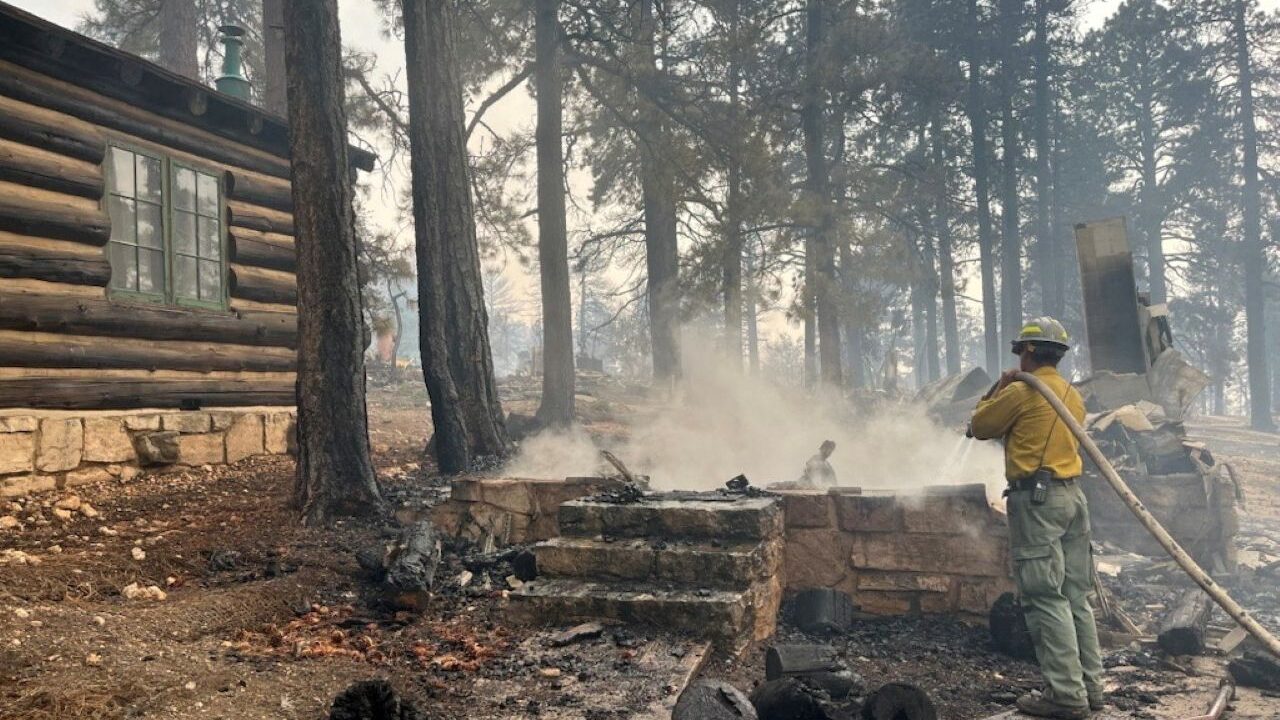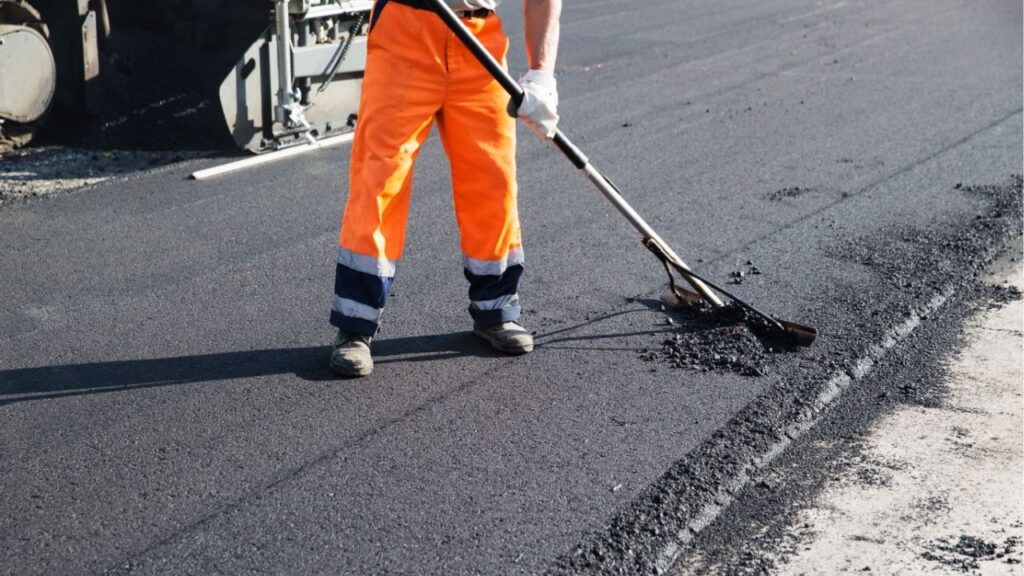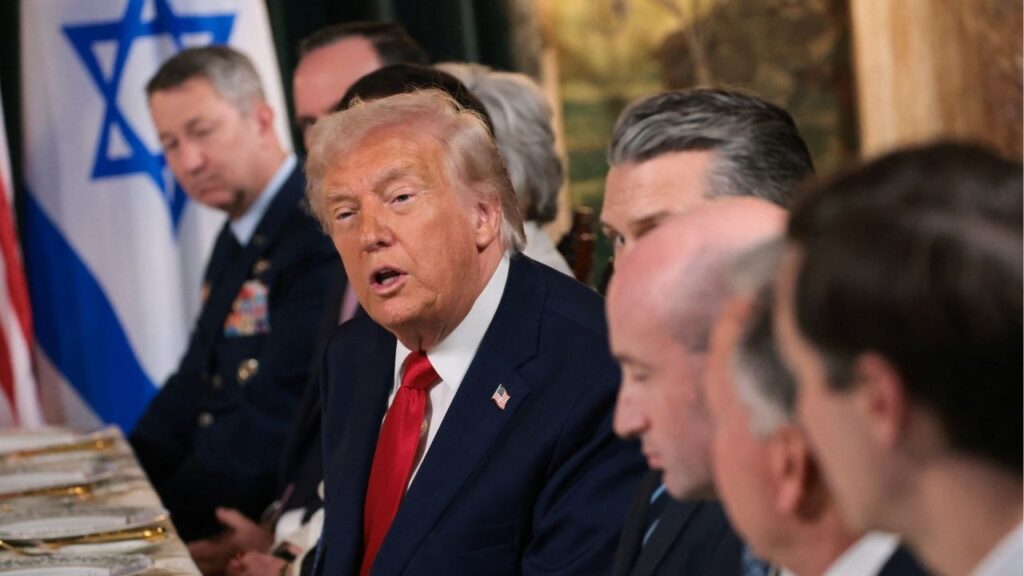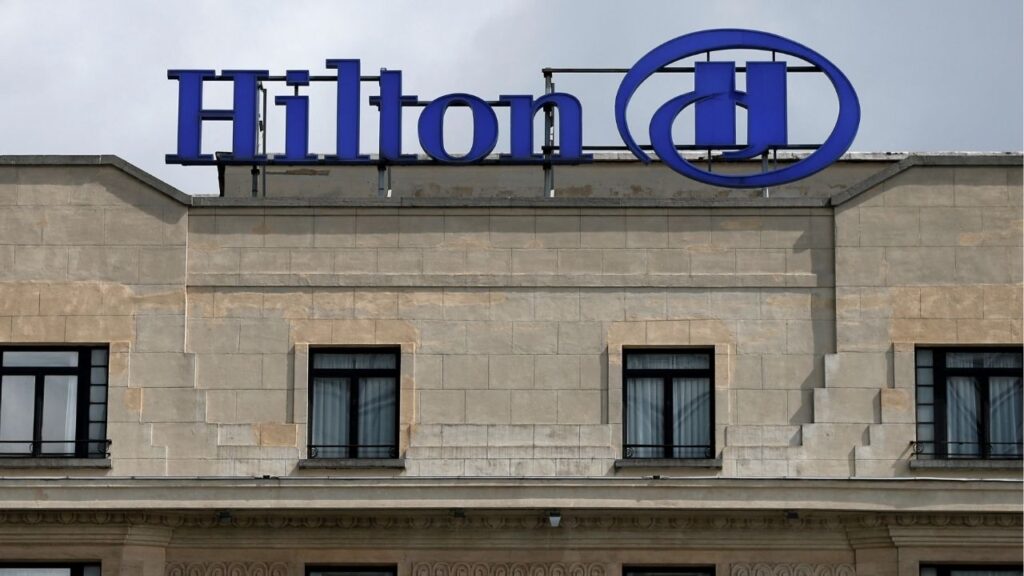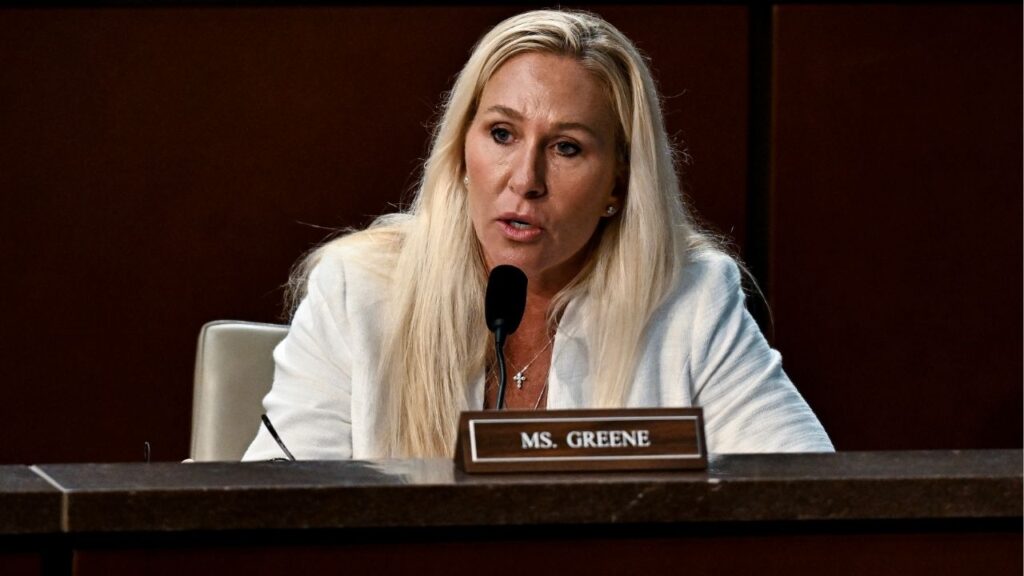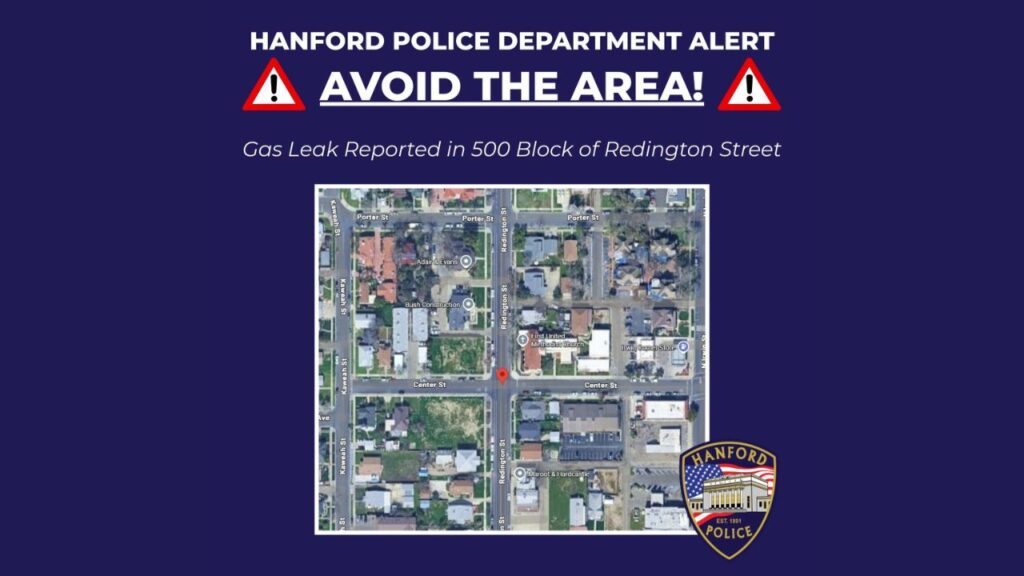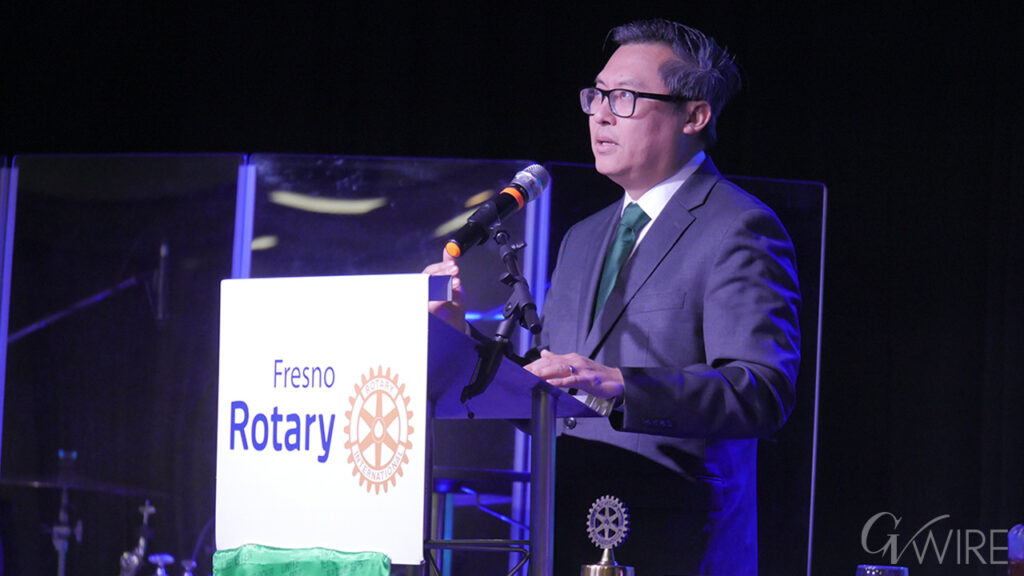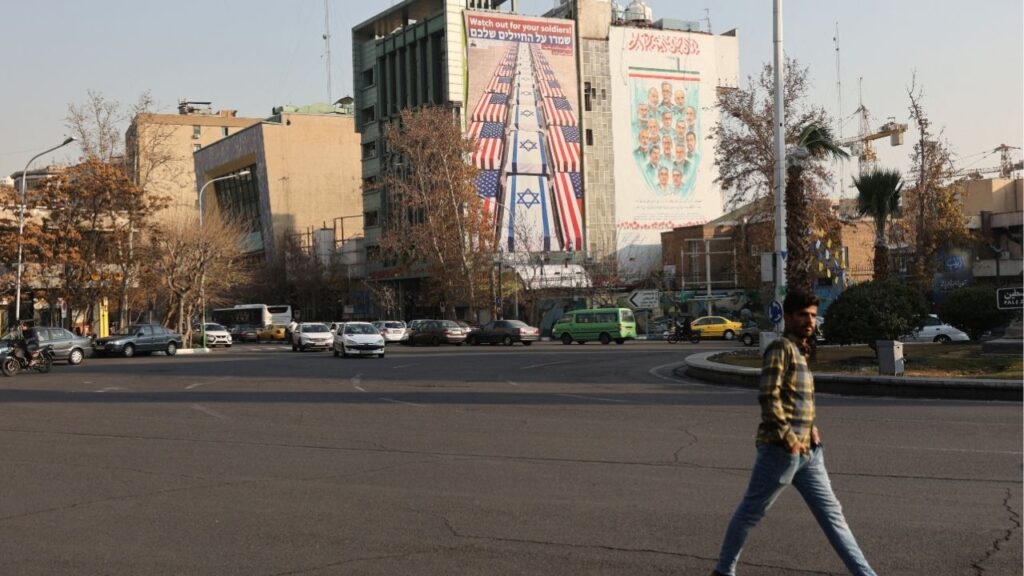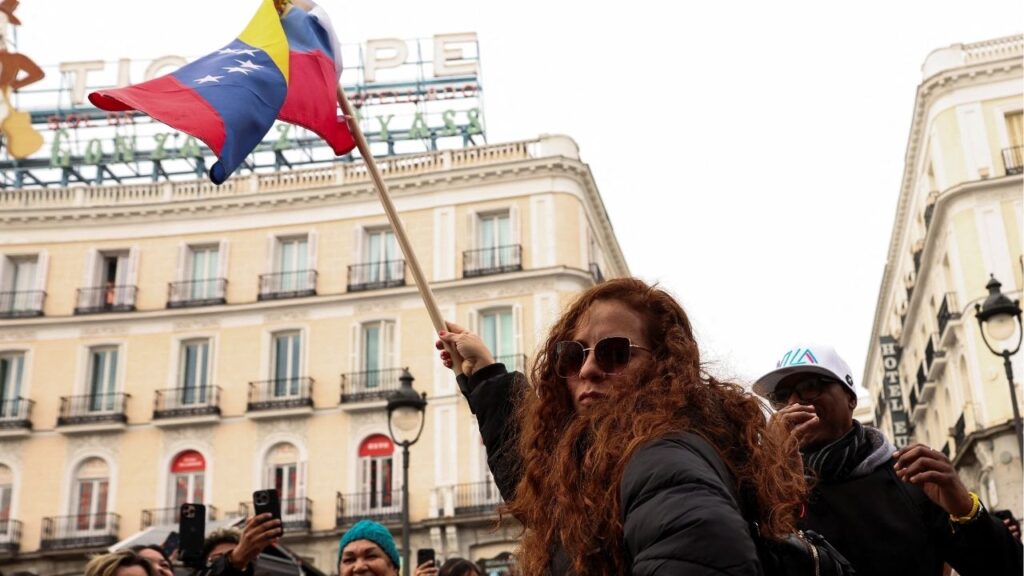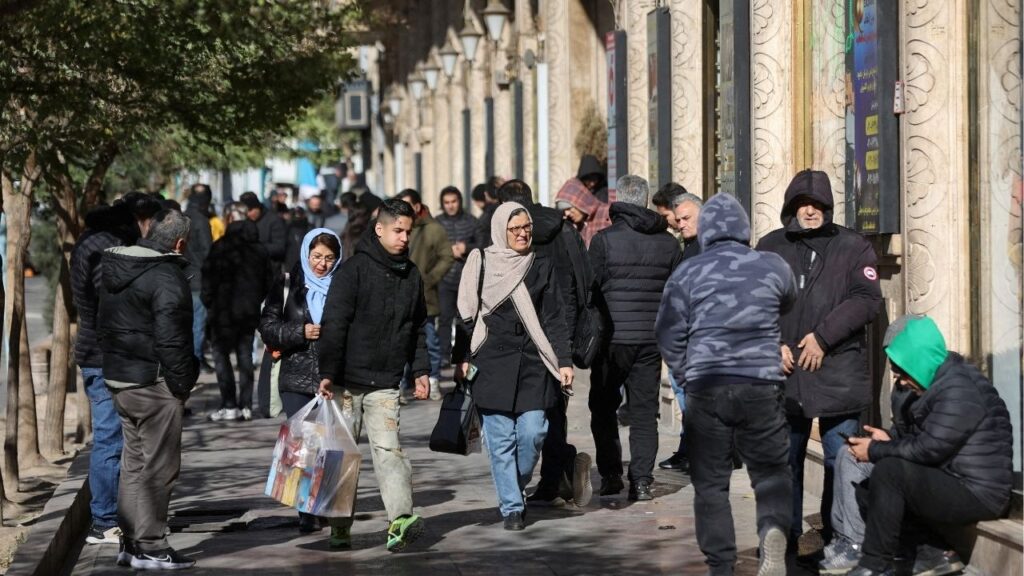A firefighter stands near smoldering debris amid the charred remains of a burned structure near the Grand Canyon Lodge in Arizona, Sunday, July 13, 2025. (National Park Service/via Reuters)

- Arizona governor questions federal government’s decision to manage a Grand Canyon blaze with a strategy that preventively burns vegetation.
- The Dragon Bravo fire, which was ignited by a lightning strike on July 4, destroys the historic Grand Canyon Lodge.
- “The federal government chose to manage that fire as a controlled burn during the driest, hottest part of the Arizona summer,” says Gov. Katie Hobbs, a Democrat.
Share
|
Getting your Trinity Audio player ready...
|
As a wildfire at the Grand Canyon National Park that left dozens of structures in cinders continued to flare Monday, the governor of Arizona questioned the federal government’s decision to manage the blaze using a strategy that preventively burns fuel-rich vegetation.
The Dragon Bravo fire, which was ignited by a lightning strike on July 4, according to a wildfire tracking website, had grown to more than 5,700 acres by Monday, shutting down access to trails through the North Rim of the Grand Canyon National Park and destroying the historic Grand Canyon Lodge and other structures.
“While the flame was started with a lightning strike, the federal government chose to manage that fire as a controlled burn during the driest, hottest part of the Arizona summer,” Gov. Katie Hobbs, a Democrat, said in a statement. She called for an independent investigation.
“An incident of this magnitude demands intense oversight and scrutiny into the federal government’s emergency response,” she said. “They must first take aggressive action to end the wildfire and prevent further damage.”
What Is a Controlled Burn?
A controlled burn is one of the most important tools used to manage fire, according to the National Park Service. They help rid forest grounds of vegetation that can serve as fuel for fires.
The prescribed plan takes careful account of the fuels, size, weather and environment and balances those factors against other possible fire-prevention methods.
After it was ignited on the Fourth of July, the Dragon Bravo fire burned in a remote area, and by July 9 it was being managed with a “confine and contain” strategy, the Grand Canyon National Park said.
“This means the fire is being allowed to fulfill its natural role within a defined area, while firefighters take action to limit its spread where necessary,” the park said, adding at the time that there were no threats to infrastructure or public safety.
“Naturally ignited wildfires play an essential role in fire-dependent ecosystems,” said statements about the fire, published on the park’s Facebook page.
The same approach continued July 10 when the fire grew to 120 acres, the park said.
But by late Saturday, the Dragon Bravo fire had grown quickly and jumped fire control lines.
Chlorine Gas Leak Prompts Evacuations
Firefighters who had been using aerial retardant had to adapt other methods after a chlorine gas leak at a water treatment facility prompted evacuations of the area.
Asked about Hobbs’ remarks, the park service on Monday referred questions to Stefan La-Sky, a spokesperson for the Southwest Area Incident Management Team 4, which is working on the Dragon Bravo fire.
Speaking generally, La-Sky said that planned burns happened after consultation among multiple agencies and take into account humidity, temperatures and other factors.
“It’s a small, low-intensity controlled fire, so when a firefighter comes in, all that stuff on the ground has been removed,” he said. “A lot of forests in America are vastly overgrown now.”
Controlled burns are a sensitive subject in forest management.
La-Sky was part of a team that worked on prescribed burns that got out of control in New Mexico in 2022, when federal employees ignited a fire in the Santa Fe National Forest to thin out dense woodlands.
But winds unexpectedly drove that prescribed burn into an out-of-control fire that grew into the largest wildfire in New Mexico’s history.
La-Sky said that 295 firefighters were working on the Dragon Bravo fire, which was at zero containment. The team’s update Monday described the fire activity as “high to extreme.”
“We are in an aggressive firefight, using full suppression activities,” La-Sky said.
The National Weather Service forecast for Tuesday showed an area of dry thunderstorms and high winds for eastern Nevada, western Utah, northern Arizona and southern Idaho, which all might affect the Dragon Bravo fire and another fire, the White Sage fire, near the Grand Canyon National Park.
The White Sage fire, which started after a thunderstorm July 9 near Fredonia, Arizona, had grown to more than 49,000 acres by early Monday.
This article originally appeared in The New York Times.
c.2025 The New York Times Company


